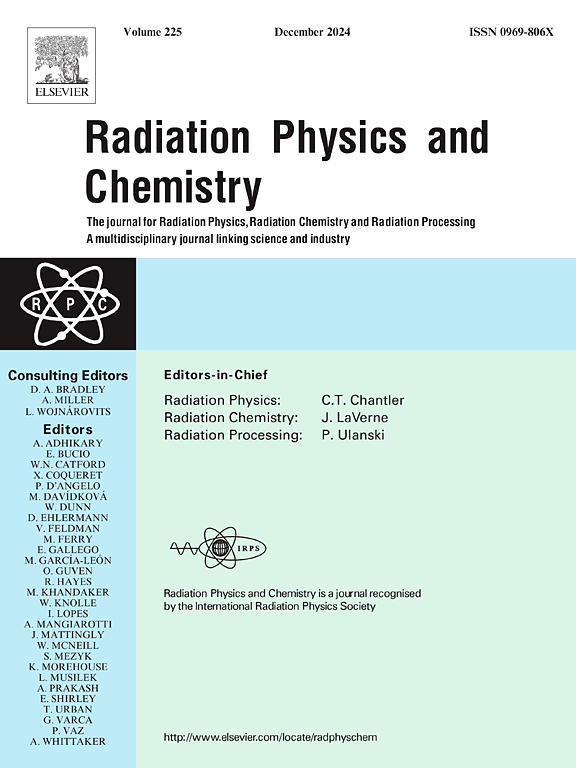Comparison of benchtop devices for X-ray fluorescence imaging based on scanning and full-field techniques
IF 2.8
3区 物理与天体物理
Q3 CHEMISTRY, PHYSICAL
引用次数: 0
Abstract
In this paper, several benchtop XRF imaging techniques and setups were compared, most of which are found in laboratories for rapid, preliminary composition determination and elemental distributions. The advantages and disadvantages of individual XRF techniques are introduced. The techniques tested in the comparison include macro-XRF scanning with a miniature X-ray tube, micro-XRF scanning with a focused X-ray beam of an X-ray tube with polycapillary optics, and full-field XRF with a spectrometric pixel detector. Nevertheless, synchrotron-based XRF techniques are not considered. The experiments were performed on glass samples which correspond to materials with an intermediate effective atomic number, along with, containing an abundance of elements whose X-ray lines span nearly the whole energy range of XRF. The standard reference material NIST 1412 was used to determine the sensitivities of the XRF setups. A glass pendant with an enameled decoration served as a representative artifact for the demonstration of the individual XRF imaging techniques. A simple Monte Carlo simulation was introduced for calculating expected XRF images for short acquisition times. This method was applied to obtain simulated on-the-fly XRF images. Macro-XRF scanning with small X-ray tubes is efficient with collimators down to approximately 0.5 mm. In order to achieve sufficient sensitivity even for narrower beams, X-ray tubes with polycapillary optics must be used. The sensitivities for micro-XRF scanning and full-field XRF imaging with parallel optics are quite similar when the X-ray sources have the same power.
基于扫描和全场技术的x射线荧光成像台式设备的比较
在本文中,比较了几种台式XRF成像技术和设置,其中大多数是在实验室中发现的,用于快速,初步的成分测定和元素分布。介绍了各种XRF技术的优缺点。在比较中测试的技术包括使用微型x射线管进行宏观XRF扫描,使用多毛细光学x射线管的聚焦x射线束进行微观XRF扫描,以及使用光谱像素检测器进行全场XRF扫描。然而,不考虑基于同步加速器的XRF技术。实验是在玻璃样品上进行的,这些样品对应于具有中间有效原子序数的材料,并且含有丰富的元素,其x射线线几乎跨越了XRF的整个能量范围。采用标准参考物质NIST 1412测定XRF装置的灵敏度。一个带有搪瓷装饰的玻璃吊坠作为代表性的人工制品,用于演示个人XRF成像技术。介绍了一种简单的蒙特卡罗模拟,用于计算短采集时间内期望的XRF图像。该方法被应用于模拟实时XRF图像。用小型x射线管进行宏观xrf扫描,准直器低至约0.5 mm时是有效的。为了达到足够的灵敏度,即使对较窄的光束,x射线管与多毛细光学必须使用。在x射线源功率相同的情况下,微XRF扫描和平行光学全场XRF成像的灵敏度非常相似。
本文章由计算机程序翻译,如有差异,请以英文原文为准。
求助全文
约1分钟内获得全文
求助全文
来源期刊

Radiation Physics and Chemistry
化学-核科学技术
CiteScore
5.60
自引率
17.20%
发文量
574
审稿时长
12 weeks
期刊介绍:
Radiation Physics and Chemistry is a multidisciplinary journal that provides a medium for publication of substantial and original papers, reviews, and short communications which focus on research and developments involving ionizing radiation in radiation physics, radiation chemistry and radiation processing.
The journal aims to publish papers with significance to an international audience, containing substantial novelty and scientific impact. The Editors reserve the rights to reject, with or without external review, papers that do not meet these criteria. This could include papers that are very similar to previous publications, only with changed target substrates, employed materials, analyzed sites and experimental methods, report results without presenting new insights and/or hypothesis testing, or do not focus on the radiation effects.
 求助内容:
求助内容: 应助结果提醒方式:
应助结果提醒方式:


